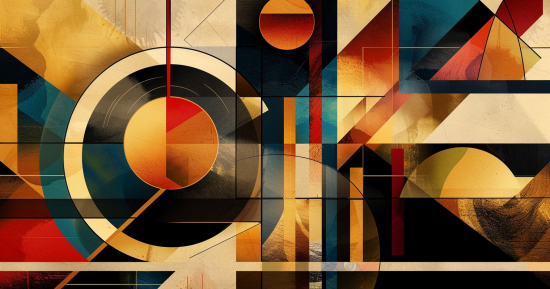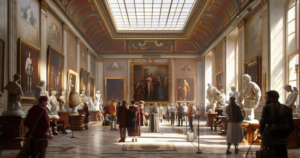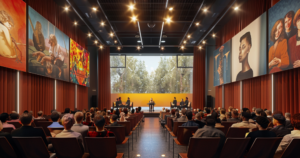Art Deco is a captivating artistic style that emerged in the early 20th century. Characterized by its distinctive use of bold lines, geometric shapes, and innovative materials, it has significantly impacted the field of design. The influence of Art Deco can be seen in many renowned architectural structures, artworks, and product designs.
Venturing into the world of Art Deco, you’re likely to discover a style that is both visually striking and historically significant.
Historical Context of Art Deco
Origins and Influences
Art Deco was a fascinating art movement that emerged in the early 20th century, mainly during the 1920s and 1930s. It was a response to the preceding Art Nouveau style and aimed to infuse functional objects with artistic touches.
With its bold geometric shapes and stylized designs, Art Deco took inspiration from various sources like ancient Egyptian and Aztec art, as well as the Machine Age.
It all started in 1925, when the movement made its debut at the Exposition Internationale des Arts Décoratifs et Industriels Modernes held in Paris, France. The exhibition showcased the work of numerous artists and designers who celebrated a shift towards modernity, simplicity, and functionality.
You’ll notice how Art Deco is easily distinguished by its:
- Simple, clean shapes
- Geometric or stylized ornamentation
- Varied and unusual materials
The style also included a range of influences from Cubism, Constructivism, and even the glamour of Hollywood. With such diverse inspirations, Art Deco was a melting pot of creative expression.
Art Deco Timeline
Below is a brief timeline of notable events in the Art Deco movement:
- 1910-1914: Early development of Art Deco
- 1925: Exposition Internationale des Arts Décoratifs et Industriels Modernes in Paris
- 1920s-1930s: Height of Art Deco popularity in Europe and the United States
- 1940s: Gradual decline of Art Deco
Over time, the style evolved, and some of its key characteristics shifted. For instance, the early years of Art Deco were characterized by richly decorated surfaces, while later periods showed a preference for streamlined and geometric designs. This might be one reason why Art Deco remains popular today – its adaptability and timelessness have allowed it to retain its charm, even a century after the movement first emerged.
Characteristics of Art Deco
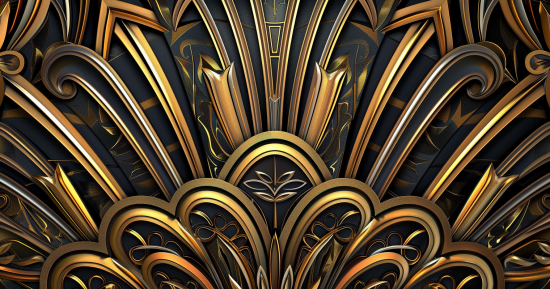
Visual Style
The design for art deco is characterized by symmetrical, geometric and often streamlined shapes. Art Deco embraces the modernity of the machine age and emphasizes simple, clean forms and focuses on the inherent design qualities of machine-made objects.
Materials and Techniques
The Art Deco style also incorporates a diverse range of materials, both traditional and new. You might see luxurious elements like gold, silver, ivory, and jade being combined with more modern materials such as chrome, plastics, and Bakelite. The use of various materials adds to the eclectic and visually striking nature of Art Deco.
In terms of techniques, Art Deco aims to showcase the impeccable craftsmanship of its creators. Therefore, you will often find meticulous detailing, high-quality finishes, and innovative manufacturing processes in Art Deco objects.
To sum up, the Art Deco style is characterized by its distinct visual style, with symmetrical, geometric, and streamlined shapes, and its unmatched attention to materials and craftsmanship. The harmony of traditional and modern elements makes Art Deco uniquely fascinating and timeless.
Art Deco in Architecture
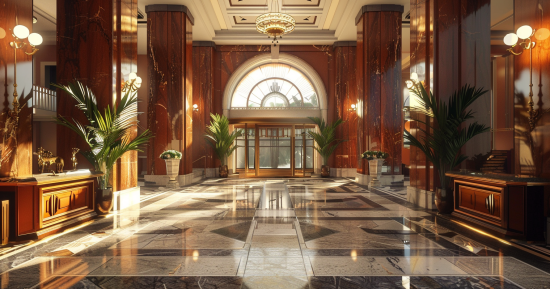
Within the realm of architecture, it is characterized by its clean, geometric shapes, streamlined appearance, and varied materials. In this section, you’ll learn how Art Deco stands out in the world of architecture and explore some of the iconic buildings that showcase this intriguing style.
Iconic Buildings
Common elements include geometric shapes like triangles, circles, and rectangles, which contribute to a distinctively modern look. Art Deco designers and architects often made use of luxurious and exotic materials, such as marble, stainless steel, and even rare woods.

Here are a few Art Deco buildings that demonstrate these characteristics:
- Chrysler Building (New York City, USA): This skyscraper is perhaps one of the most famous examples of Art Deco architecture, with its elegant stainless steel spire and ornate geometric detailing.
- Palais de Chaillot (Paris, France): Featuring strong geometric lines and decorative motifs, this building is a prime example of Art Deco design on a grand scale.
- Edificio Kavanagh (Buenos Aires, Argentina): With its bold, straight lines and large, rectangular windows, this building represents a more streamlined approach to Art Deco architecture.
Art Deco’s influence in architecture can be seen worldwide; these are just a few examples of the impact that this unique style has had on various structures. Art Deco shaped the modern world. This art can create a feeling of timelessness in architecture.
Influence and Legacy
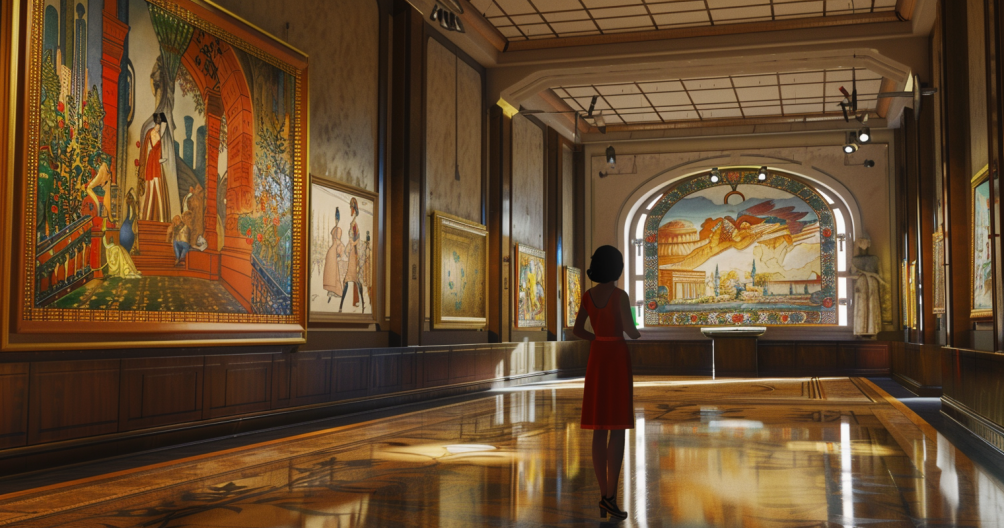
Art Deco in Modern Design
One of the reasons Art Deco has remained popular over the years is due to its ability to incorporate modern materials like chrome, glass, and plastic.
Here’s a quick example of how Art Deco influences modern design:
- Buildings: Many hotels, theaters, and even skyscrapers have elements of Art Deco, like streamlined shapes, impressive ornaments, and angular forms.
- Fashion: You’ll find Art Deco-inspired jewelry, accessories, and clothing that emphasize geometric patterns and luxury materials, such as gems, metallic, and unusual combinations.
Conservation and Preservation
Art Deco has a fascinating history, and preserving its legacy is essential. You’ll find countless examples of historical Art Deco buildings around the world that have been meticulously restored and maintained. These structures are often important cultural or historical landmarks that showcase their original grandeur and elegance.
Some ways you can support Art Deco preservation include:
- Educating yourself about the history and significance of Art Deco architecture and design.
- Supporting local organizations dedicated to preserving Art Deco landmarks in your area.
- Participating in events and tours that feature Art Deco buildings and collections.
Remember, when you engage with the Art Deco style, you’re connecting with a critical movement in the history of design that continues to influence our world today.
Take a look at the extraordinary art of art deco while traveling or touring cities and enjoy it. Feel free to share your experiences with art deco in the comments.
FAQ – What Does Art Deco Mean
Why ist Art Deco so popular?
Art Deco is popular for its luxurious and glamorous aesthetic, characterized by geometric shapes, bold colors, and intricate craftsmanship. It embodies the opulence of the Roaring Twenties and the optimism of the interwar period, making it a timeless and iconic style that continues to captivate and inspire.
What are Art Deco colors?
Art Deco colors are bold and vibrant, including rich jewel tones like emerald green, sapphire blue, ruby red, and amethyst purple. Additionally, metallic shades such as gold, silver, and bronze are prominent in Art Deco design, adding a sense of luxury and sophistication to the color palette.
What is the most famous Art Deco jewelry?
The most famous Art Deco jewelry includes pieces from renowned designers like Cartier, Van Cleef & Arpels, and Boucheron. Iconic designs feature geometric shapes, vibrant gemstones, and intricate craftsmanship, reflecting the opulence and glamour of the Art Deco era.

